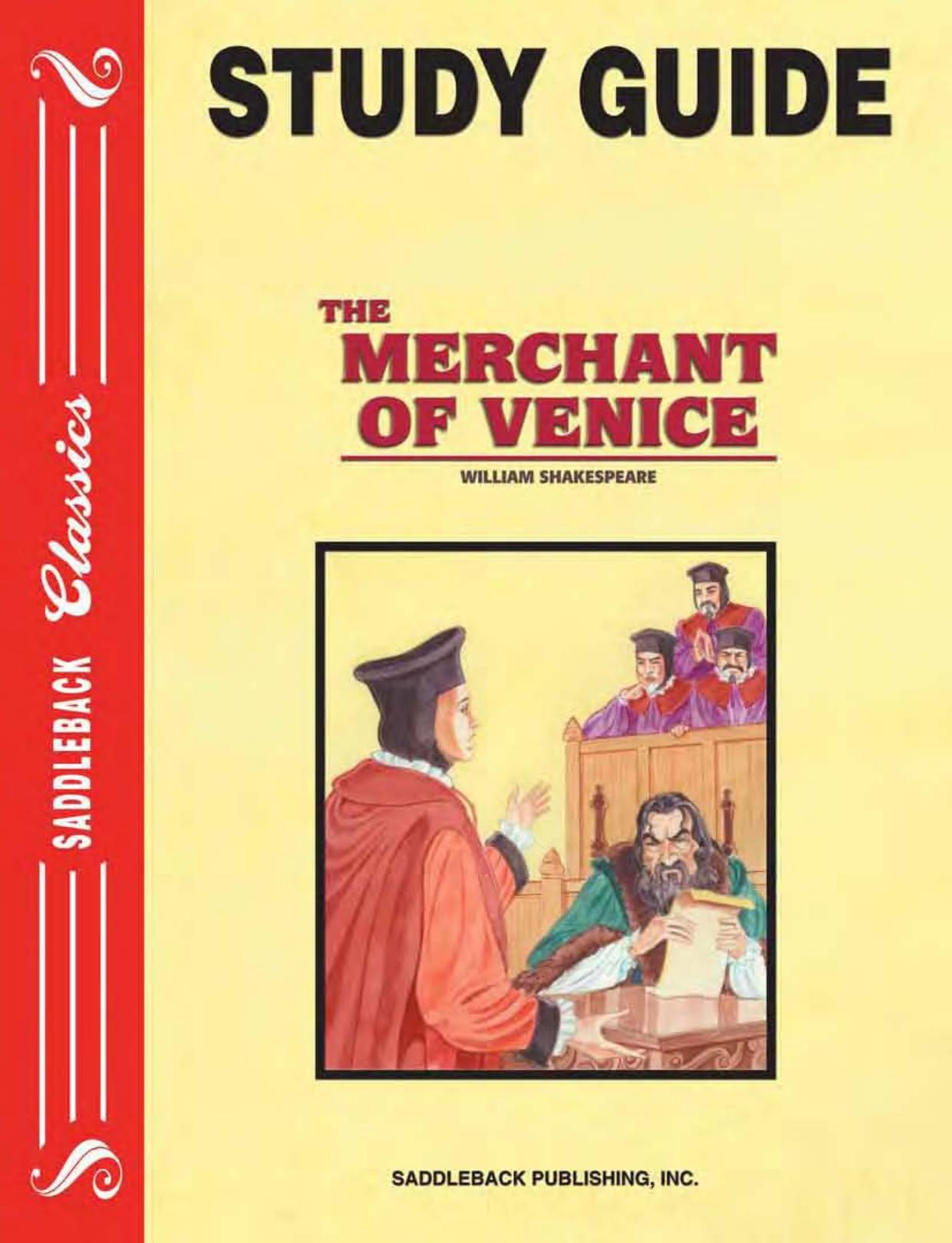The Merchant of Venice by William Shakespeare

Author:William Shakespeare [Shakespeare, William]
Language: eng
Format: epub, mobi, pdf
ISBN: 978-1-58836-874-4
Publisher: Random House Publishing Group
Published: 2010-03-24T16:00:00+00:00
2. Shakespeare Memorial Theatre, Stratford-upon-Avon, 1953: a snarling and spitting Michael Redgrave as Shylock with a warm and dignified Peggy Ashcroft as Portia.
London’s National Theatre mounted two critically acclaimed productions in the later twentieth century, directed by Jonathan Miller (1970) and Trevor Nunn (1999), both subsequently televised. The two were closely related, both featuring a dignified Shylock integrated into a capitalist mercantile culture: other than his yarmulke, his costume in both identified him as a member of the Venetian community. This allowed the idea of his “outsider” status to be explored more subtly: Miller noted that by “allowing Shylock to appear as one among many businessmen, scarcely distinguishable from them, it made sense of his claim that, apart from his customs, a Jew is like everyone else.”16 Nunn followed this logic, as have many twenty-first-century directors of the play, such as Darko Tresnjak (Theater for a New Audience, 2007) and Tim Carroll (RSC, 2008).
Miller’s production starred Laurence Olivier, whose key inspiration for his performance was Benjamin Disraeli. He dramatized the trials of an alien attempting to integrate himself into a new society, his abuses at Christian hands eventually unleashing a dignified and righteous rage. Henry Goodman’s Shylock in Nunn’s production was in a similar position, and emphasized the genial and fatherly aspects of the character: this was a good-natured and often humorous Shylock, whose trials were undeserved. For both Miller and Nunn, the key to demonstrating the insidiousness of racial prejudice was in setting the production in history recent enough to be uncomfortably familiar, but distant enough to provide a semblance of objectivity. Miller hearkened back to the late nineteenth century, while Nunn set his production in the 1930s. Both, too, used the character of Jessica to unsettle the harmony of Act 5. Miller made her “melancholy, not at all the giddy, venturesome girl one might expect,”17 and at the end she could be heard singing the Kaddish offstage as a lament to her lost father. Gabrielle Jourdan’s Jessica in the 1999 production was similarly discontented and closed the play by singing the same Yiddish prayer in a direct reference. Where the eighteenth-century star vehicles had relied on a tremendous Act 4 exit from Shylock to cast a pallor over the remaining scenes, Miller and Nunn’s use of Jessica established a quieter and more universal epitaph for cultures violently subsumed.
A more recent trend in performance is to use the play as an exploration of male sexuality, often with the result of refocusing a production on the Merchant. Academics may argue that early modern platonic homosocial modes of behavior are easily confused with more modern understandings of homosexuality, but onstage it has become increasingly customary to explain Antonio’s melancholy through feelings of unrequited (or once-requited) love for Bassanio, often with the suggestion that his sexuality makes him as much of an outsider as Shylock’s religion does his. Bill Alexander’s 1987 RSC production (discussed below) extended the homosexual theme to include most of the Venetian characters, and Michael Dobson notes that in
Download
The Merchant of Venice by William Shakespeare.mobi
The Merchant of Venice by William Shakespeare.pdf
This site does not store any files on its server. We only index and link to content provided by other sites. Please contact the content providers to delete copyright contents if any and email us, we'll remove relevant links or contents immediately.
| Ancient & Classical | Anthologies |
| British & Irish | Children's |
| Comedy | LGBT |
| Medieval | Regional & Cultural |
| Religious & Liturgical | Shakespeare |
| Tragedy | United States |
| Women Authors |
Cecilia; Or, Memoirs of an Heiress — Volume 3 by Fanny Burney(30954)
Cecilia; Or, Memoirs of an Heiress — Volume 2 by Fanny Burney(30909)
Dialogue by Robert McKee(3597)
The 101 Dalmatians by Dodie Smith(2946)
Bound by Hatred (The Singham Bloodlines Book 2) by MV Kasi(2697)
Harry Potter and the Cursed Child - Parts One and Two by John Tiffany(2575)
The Beautiful Boys: A High School NA Reverse Harem Paranormal Bully Romance (Shadowlight Academy Book 1) by Gow Kailin(2506)
The Art of Dramatic Writing: Its Basis in the Creative Interpretation of Human Motives by Egri Lajos(2421)
Carrie's War by Nina Bawden(2107)
Angels in America by Tony Kushner(2054)
Unlaced by Jaci Burton & Jasmine Haynes & Joey W. Hill & Denise Rossetti(2028)
A Clockwork Orange by Anthony Burgess(1949)
The Femme Playlist & I Cannot Lie to the Stars That Made Me by Catherine Hernandez(1896)
Drama by John Lithgow(1889)
Open Book by Jessica Simpson(1799)
Outside Woman (BWWM Amish Romance) by Stacy-Deanne(1743)
Terrorist Cop by Mordecai Dzikansky & ROBERT SLATER(1724)
Yerma by Federico García Lorca(1646)
Leo's Desire by Sundari Venkatraman(1600)
